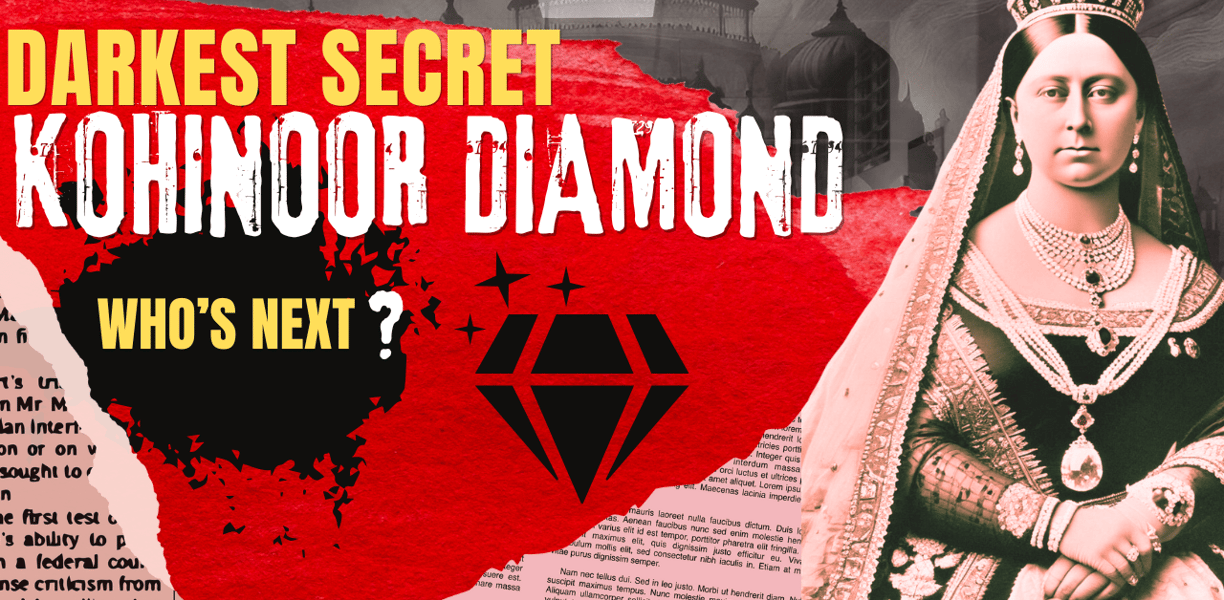The Koh-i-Noor: A Diamond of Empires and a Legendary Curse
The Koh-i-Noor, meaning "Mountain of Light," is one of the world's most famous and controversial diamonds. Its history is intertwined with the rise and fall of empires, and a legendary curse adds to its mystique.
DARK TRUTH & MYSTERIES DIGEST
10/24/20232 min read


Introduction:
The Koh-i-Noor, a name that translates to "Mountain of Light," isn't just a diamond; it's a saga etched in brilliance and shrouded in mystery. This legendary gem, currently nestled within the British Crown Jewels, carries a history as multifaceted as its facets, and a curse that has echoed through centuries.
A Journey Through Empires: The Koh-i-Noor's Tumultuous Past
The Koh-i-Noor's story isn't one of serene beauty; it's a tale of conquest, power, and whispers of misfortune.
Ancient Beginnings: Our story begins in the 1300s with Alin Ki. His acquisition of the diamond was, according to legend, marked by tragedy – a possible harbinger of the "curse."
The Mughal Dynasty: This magnificent diamond passed into the hands of Mughal emperors, each seemingly destined for hardship. Imprisonment, loss of power, and general misfortune became a recurring theme.
Nader Shah's Reign: In 1739, Nader Shah of Persia seized the diamond, giving it the name we know today. His rule, however, was plagued by paranoia, culminating in his assassination.
Ranjit Singh and the Sikh Empire: The last Indian ruler to possess the Koh-i-Noor, Ranjit Singh, saw his empire crumble into chaos after his death.
The British Era: In 1849, the diamond found its way to the British Crown Jewels. Notably, it has only been worn by female members of the royal family. Some even speculate that the 1857 Indian Rebellion and the eventual decline of the British Empire were influenced by the Koh-i-Noor's alleged curse.
The Shadow of the Curse:
The Koh-i-Noor's reputation is inextricably linked to the belief that it brings misfortune to men. Throughout its journey, male owners have faced violence, betrayal, and the loss of power. The legend says that women are spared from this curse, which explains why it has only been worn by queens during British rule.
The Koh-i-Noor Today: A Symbol of Contention:
Currently, the diamond resides in the Tower of London, a silent witness to its storied past. However, its presence is far from uncontested. India, Pakistan, and Afghanistan have all laid claim to the Koh-i-Noor, sparking ongoing debates about its rightful ownership and the ethics of its possession.
The Unanswered Question: Will the Curse Reawaken?
Perhaps the most intriguing question surrounding the Koh-i-Noor is whether its legendary curse would resurface if it were returned to India. This question hangs in the air, adding another layer of intrigue to this already captivating tale.
Conclusion:
The Koh-i-Noor is more than just a diamond; it's a symbol of history, power, and perhaps, a lingering curse. Its journey through empires and the ongoing debate about its ownership make it one of the most fascinating gems in the world.
Call to Action:
What are your thoughts on the Koh-i-Noor's history and the legend of its curse?

